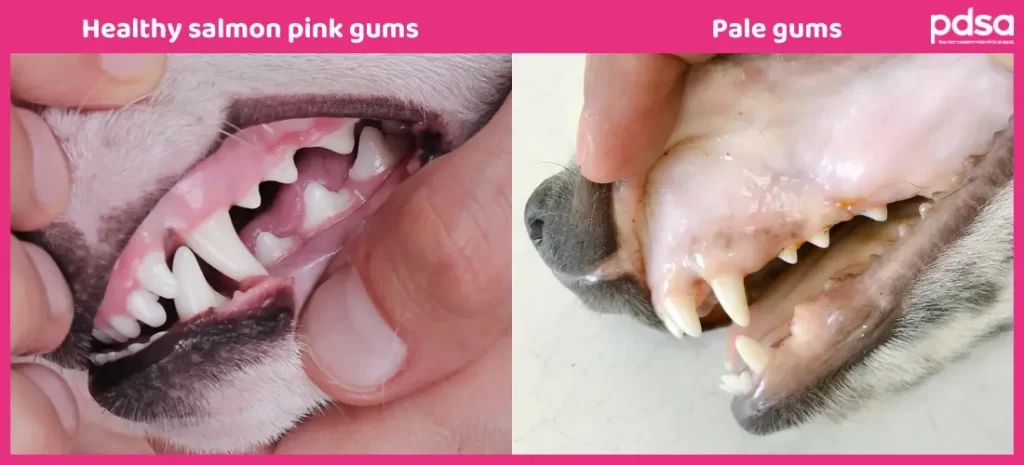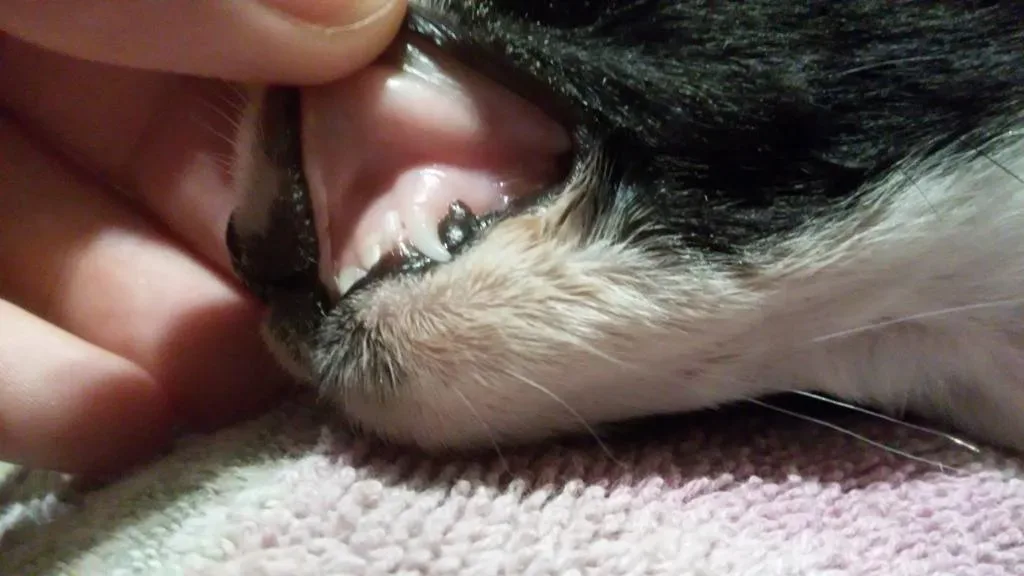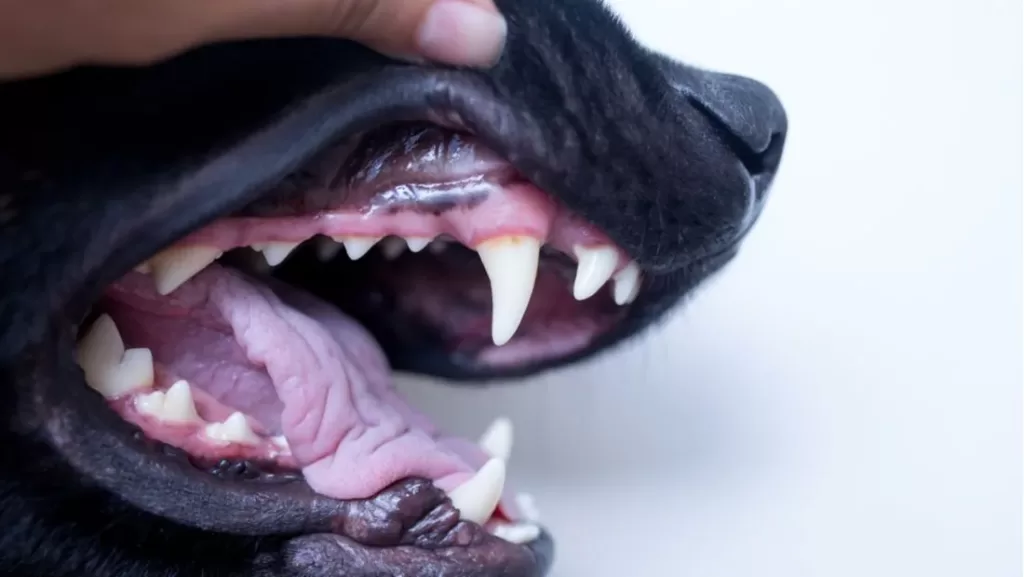Welcome to our comprehensive guide on pale gums in dogs. Pale gums, also referred to as white gums in dogs, occur when a dog’s gums lose their healthy pink color and take on a pale-colored appearance.
Table of Contents
This can indicate several underlying health issues that require immediate attention. Understanding the causes and recognizing the signs of pale gums in dogs is critical in maintaining your furry companion’s overall health and well-being.
Key Takeaways:
- Pale gums in dogs can signify a range of underlying health issues that require prompt attention.
- Understanding the normal gum color in dogs is essential to identify pale gums.
- Common causes of pale gums in dogs include anemia, illness, and other factors.
- Recognizing the signs of pale gums in dogs and knowing when to seek veterinary assistance can be life-saving.
- Actionable steps such as home remedies, regular dental care, and proper nutrition can help address pale gums in dogs.
Understanding Normal Gum Color in Dogs

Gum color can vary between dogs, but generally, healthy dog gums have a shade of pink. The color variation can range from light pink to deep pink depending on the breed, age, and hydration levels of the dog. Other factors that can affect gum color include panting, exercise, and stress levels.
In addition to their color, healthy gums should be moist and smooth. If your dog’s gums appear dry or sticky, it may indicate dehydration or an underlying medical issue.
The best way to monitor your dog’s gum color is to observe them when they are relaxed, well-rested, and at ease. This way, you can familiarize yourself with the normal gum color of your dog and better recognize abnormal changes.
It’s worth noting that the color of the gums can’t always tell everything about your dog’s health. While pale gums can be a sign of illness, not all dogs with pale gums are unwell. It is important to watch for other symptoms of sickness if you notice changes in the color of your dog’s gums.
Common Causes of Pale Gums in Dogs
Pale gums in dogs may indicate underlying health conditions that require immediate attention. Some common causes of pale gums in dogs, include:
| Cause | Symptoms |
|---|---|
| Anemia | Weakness, lethargy, loss of appetite, rapid breathing, and increased heart rate |
| Illness | Fever, cough, vomiting, diarrhea, and loss of appetite |
| Dental problems | Swollen gums, bad breath, tooth loss, and difficulty eating |
| Nutritional deficiency | Weight loss, dull coat, and decreased energy levels |
| Infection | Fever, lethargy, loss of appetite, and swollen lymph nodes |
Other factors that may lead to pale gums in dogs include poisoning, blood loss, shock, stress, and anxiety. If your dog shows any signs of pale gums, it is essential to consult a veterinarian immediately for proper diagnosis and treatment.
Depending on the underlying cause, your vet may recommend dietary changes, supplements, medications, or surgery to restore your dog’s health. Early intervention can increase the chances of successful treatment and improve your dog’s overall well-being.
Recognizing Pale Gums in Dogs and When to Seek Veterinary Assistance

Pale gums in dogs can indicate underlying health issues and require prompt attention. Recognizing the signs of pale gums requires careful observation of your dog’s mouth, nose, and gums. Pale gums dogs may have gums that are less pink than normal, indicating a decreased amount of blood flow to the area. Sick dog gums may also appear white or gray. An unhealthy dog nose may be dry and cracked.
Other symptoms to look out for in addition to pale gums include lethargy, loss of appetite, vomiting, weight loss, and redness around dogs mouth and nose. Paleness meaning can vary depending on the cause, and it’s crucial to consider all symptoms when identifying problems.
If you notice any of these symptoms or have concerns about your dog’s gum color, seek veterinary assistance immediately. Your veterinarian can perform an evaluation and determine the underlying cause of the pale gums. Early detection and treatment can make a tremendous difference in your dog’s health and well-being.
Effective Responses for Pale Gums in Dogs
If you notice that your furry friend’s gum color is not quite right, there are several actions you can take to address the issue. Determining the underlying cause is key in establishing the right response for pale gums in dogs.
Nutrition
Nutrition plays a large role in gum health in canines. A balanced diet can help reduce inflammation and promote healthy gums. Including vitamins C and K in your pup’s diet can improve gum health by preventing gum bleeding and promoting blood clotting. Consult with your veterinarian for diet recommendations that promote good teeth and gum health.
Dental Care
Dental care is essential for promoting healthy gums in dogs. Regular dental cleanings can help remove plaque buildup that may be contributing to the discoloration of your dog’s gums. Brushing your dog’s teeth daily, as well as using dental chews and oral rinses, can also improve gum health. Do not use human toothpaste, only use toothpaste specifically designed for dogs.
Professional Intervention
If home remedies do not provide relief, consider seeking professional intervention from your veterinarian. They may suggest professional dental cleanings or in severe cases, periodontal therapy to remove damaged tissue. Avoid any surgical procedures that do not have to be done by a licensed veterinarian.
Evaluation for Underlying Conditions
If your dog’s gums have a swollen or whitish appearance, it may be an indication of an underlying condition. Schedule an appointment with your veterinarian as soon as possible to detect and treat any underlying health problems that may be causing the discoloration.
Take prompt action if you notice pale gums in your dog. Providing the necessary care and attention can improve gum health and overall well-being.
Conclusion
We hope this article has provided useful insights into the topic of pale gums in dogs. It is essential to pay close attention to changes in gum color as it could indicate underlying health issues. As we discussed, pale gums in dogs can result from various causes such as anemia, illness, or other factors.
It is crucial to recognize the signs of pale gums in dogs, such as white or dark gums, bleeding from the mouth before dying, unhealthy gums color, or black gums on the dog. Alongside this, we discussed the importance of healthy gums in dogs, regular dental care, proper nutrition, and timely veterinary attention.
Also Read: 4 Best Dog Shoes for Summers to Protect Your Pup from Hot Pavement
By taking proper care of our furry companions, we can ensure their overall well-being and avoid potential health issues. If you notice pale gums in your dog, we suggest you seek veterinary assistance promptly. Remember, prevention is always better than cure.
FAQ
What causes pale gums in dogs?
Pale gums in dogs can be caused by various factors, including anemia, illness, dehydration, gum disease, and other underlying health conditions. It is important to identify the root cause to determine the appropriate response.
How can I recognize pale gums in my dog?
Pale gums in dogs can be identified by their whitish or grayish appearance, indicating a lack of healthy blood flow. Additionally, other symptoms such as lethargy, weakness, loss of appetite, and paleness in the nose and lips may accompany pale gums.
When should I seek veterinary assistance for my dog’s pale gums?
It is crucial to seek veterinary assistance if your dog’s gums are pale and they are displaying other concerning symptoms. Prompt medical attention is necessary to diagnose the underlying cause and provide appropriate treatment for your dog’s well-being.
How can I address pale gums in my dog?
The appropriate response to pale gums in dogs varies depending on the underlying cause. It is recommended to consult with a veterinarian who can diagnose the root cause and provide tailored treatment options, which may include dietary adjustments, supplements, medications, or dental care.
How can I maintain healthy gums in my dog?
Regular dental care, such as brushing your dog’s teeth, providing dental treats or toys, and scheduling professional cleanings, can help maintain healthy gums in your dog. Additionally, a balanced diet, regular exercise, and prompt veterinary care are essential for overall gum health.

